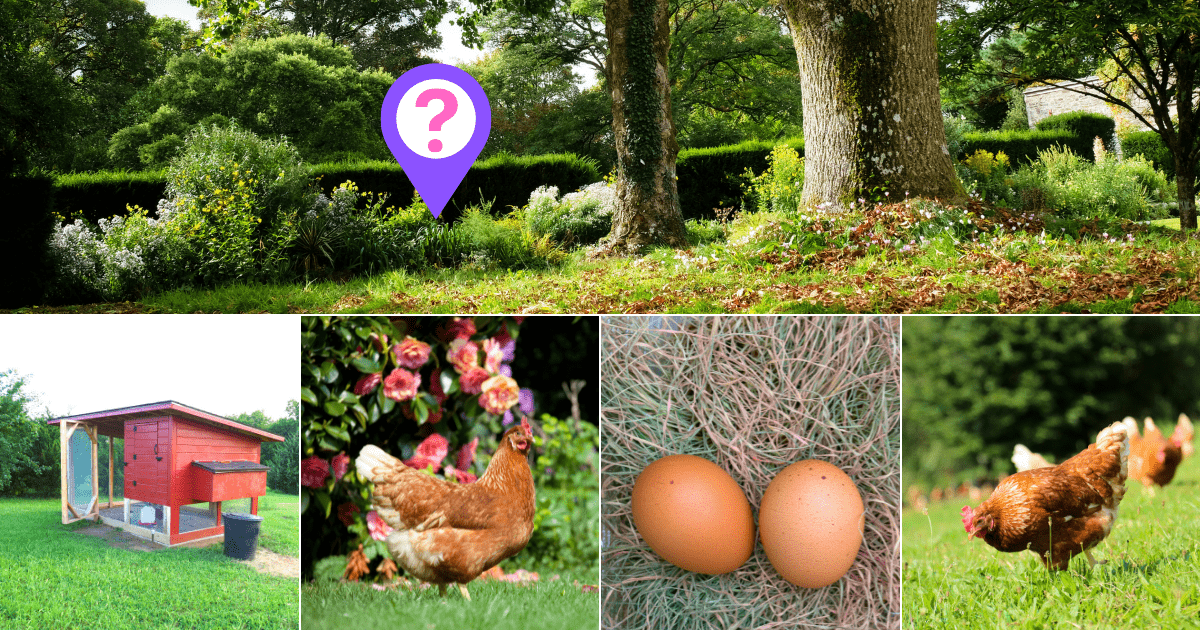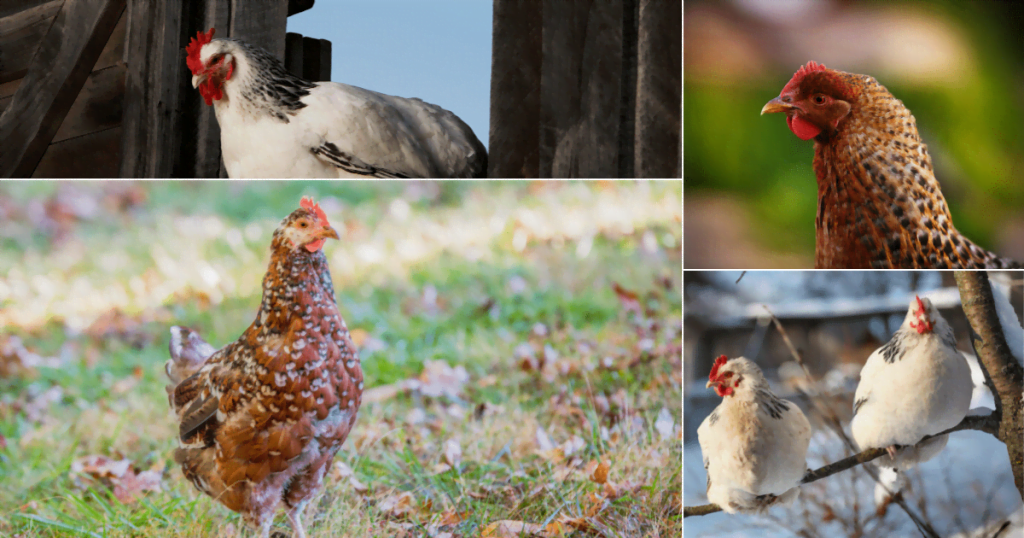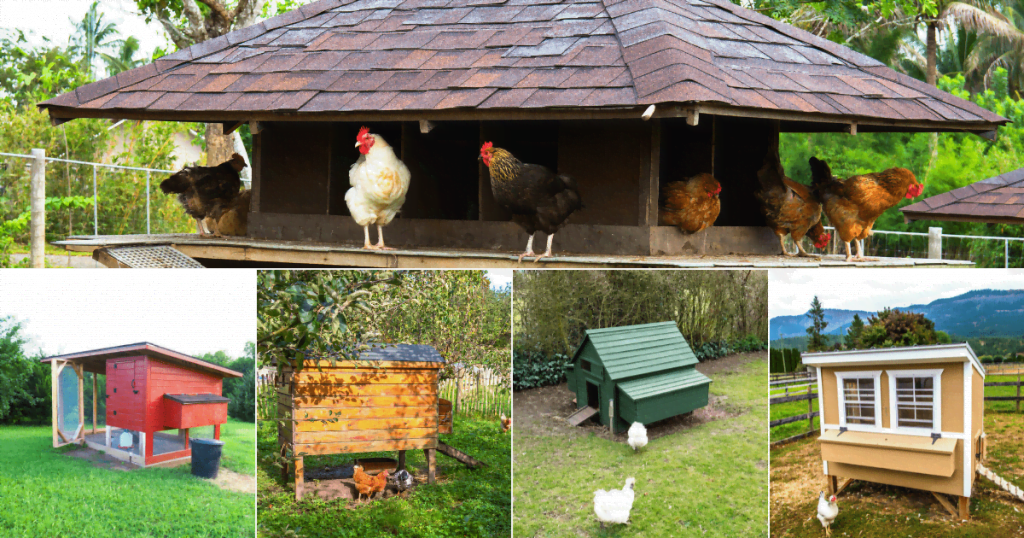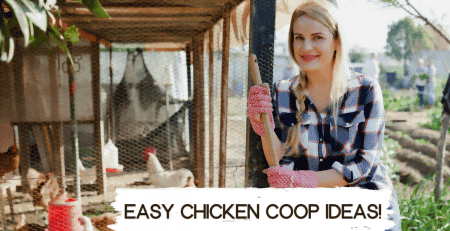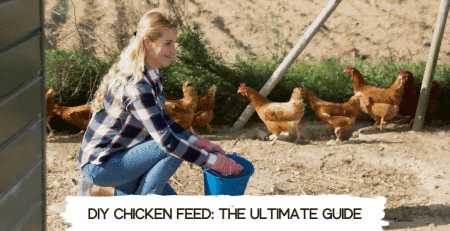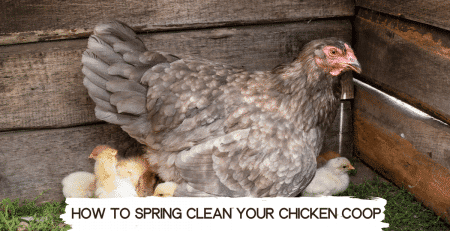We know that chicken raising is fun and exciting, but it is also time-consuming and meticulous. Looking upon your happy chickens every day and gathering a basket of eggs looks and feels effortless, but how to get there. The location of your chicken coop can significantly impact your hens to lay less or more eggs. That all ties in with the well-being of your chickens. Have you ever stood and looked at your yard and thought to yourself: “Where should I put or move my chicken coop?” We have some guidance for those just starting with your chosen chicken coop or avoiding the summer heat to provide them with a good starting point of making a happy flock that can amount to more eggs.
Having an excellent sturdy chicken coop is the key to success, but where to put it?
First, we need to look at what kind of chicken coop you are most comfortable with? For example, do you like a stationary housing that looks pretty, or does functionality work best for you, and you want a movable coop for your chickens?
Available space
Choose green and shaded surroundings. Your plants are your biggest allies. Trees, bushes, and shrubs protect from snow and give shade in the summer. So, if you have a tree or a bush, then your planning is already solidified in its surroundings. Then the only place remaining is under or next to your tree.
Seasons
Winter is a time of protection from the cold seeping into your chicken coop. Therefore, in the winter, you will need your chicken coop to be in a nicely isolated area amongst shrubs, a wall, or a tree.
Spring has a lot more sunshine, so you can move your chicken coop where there is most sunshine during the day to keep your chicken coop warm and windproof.
Summer also requires the coop to be nicely protected from the sun. A cooling shade always comes in handy for cooling down your chickens and their eggs.
In Autumn, the sun is lower, and days are starting to be colder, so a sunnier spot is pleasant.
But not all locations for your chicken coop have such luck as trees and bushes. Sometimes we have to work with what we’ve got. It is best to isolate your coop in not-so-suitable places, so it keeps its warmth in the winter and does not let in the hot air in the summer. Also, positioning it where the wind can ventilate is most useful for the well-being of chickens inside the coop.
But what if you do not have a chicken coop that moves around? Then it would help if you looked at certain spots in your property that all year long have the same properties that we mentioned before. So, it would help if you considered your overall weather. If you live in the country’s sunny part, you will most likely want a steady shade. If you live in a non-sunny part of the country, you will need more sun and isolation in the winter months.
Legislation
Something else to be cautious about when choosing the best location for your chicken coop are the rules and regulations for chicken coop raising where you reside. Many municipalities and suburban subdivisions have rules against chicken keeping that can set you back quite a bit. In addition, even if having chickens is allowed in your residing area, you can face a long list of conditions. These conditions include regulations related to the number of chickens allowed, regulation of roosters (allowed or not allowed), required fees and permits, containment requirements, regulations related to chicken enclosures, setback requirements for coops, restrictions regarding the slaughtering of chickens, and nuisance clauses.
It is good to know all the legal requirements that your place of residence has. It is handy to look up zoning laws and ordinances. Local zoning laws regulate how you may use a property. You can find out your zoning category for your property if you ask your local department of city planning, zoning office, or city hall for a copy of the zoning ordinance, which is a public record. Many communities make their zoning ordinances and maps available online. Once you know the zoning category for your property, you will need to review the permitted uses for that category. If your property is zoned as residential or commercial, restrictions may apply. If your zoning category is agricultural, then raising chickens will most likely be a permitted use.
Another legality that you should be on the lookout for is a restrictive covenant that is a promise that is included in a legal agreement that prevents one party from taking a specific action. A restrictive covenant may consist of things that you can’t do with your property. For example, some properties have a ban on free-range, and an enclosure must always be in the back of your home to provide cleanliness and odor-free out-of-sight chicken coop. In addition, it will restrict having chickens and, if you can have them, how to raise them, etc.
You can also contact a member of your local planning board, county clerk, or animal control representative for the amount of acreage needed per animal. Commonly, some laws will state that chickens must be kept and housed a specified distance from homes. For example, some define 10 feet to approximately 150 feet. It also varies if you plan to put your chicken coop next to your neighbor’s house or next to your own. The best practice is also to not bother your neighbors with the chicken coops odor (food and chicken feces), noise (chucking or clucking), and insects (mostly flies that feed off the left wastes that can be dangerous because they transmit diseases). If you did not get chickens yet and wonder what kind of chicken is excellent for low noise and maintenance, you could read our other blog post on chicken breeds. Locating the chicken coop in an area furthest away from all houses minimizes the nuisance mentioned above.
ow that we have got some idea about locating our chicken coop, we must think about where chickens are the happiest and safest. We believe that a dry and sheltered location, where you can feed them, clean the coop, and gather eggs without disturbance, will make them happiest. You can also protect your chicken coop area with a nice fence to keep predators away and other nuisances from your lively chicken coop. Of course, excellent protection for your chicken coop is also the Run-Chicken coop door that protects your chickens at night and lets them out at sunrise for a good walk around and a much-needed peck on the ground. There are other protective measures that you need to consider when raising your chicken coop. In detail, we have gathered information here.
Personal preference
The best chicken coop location is also a personal choice of the owner. If you like being outside and have a nice walk to the chicken coop, then the further away it will be, the better. On the other hand, some want to look through the window and see our pets right away, so smaller proximity works best for some.
While you can scatter food in a pen and keep water available, providing a suitable shelter requires planning. Before you design your chicken coop, consider sun exposure, wind direction, your neighbors, and the city planning department’s setback requirements, and you will already prepare for a nice spot that will make your chickens happy. Run-Chicken team, wishes you a bountiful location for your chicken coop.

